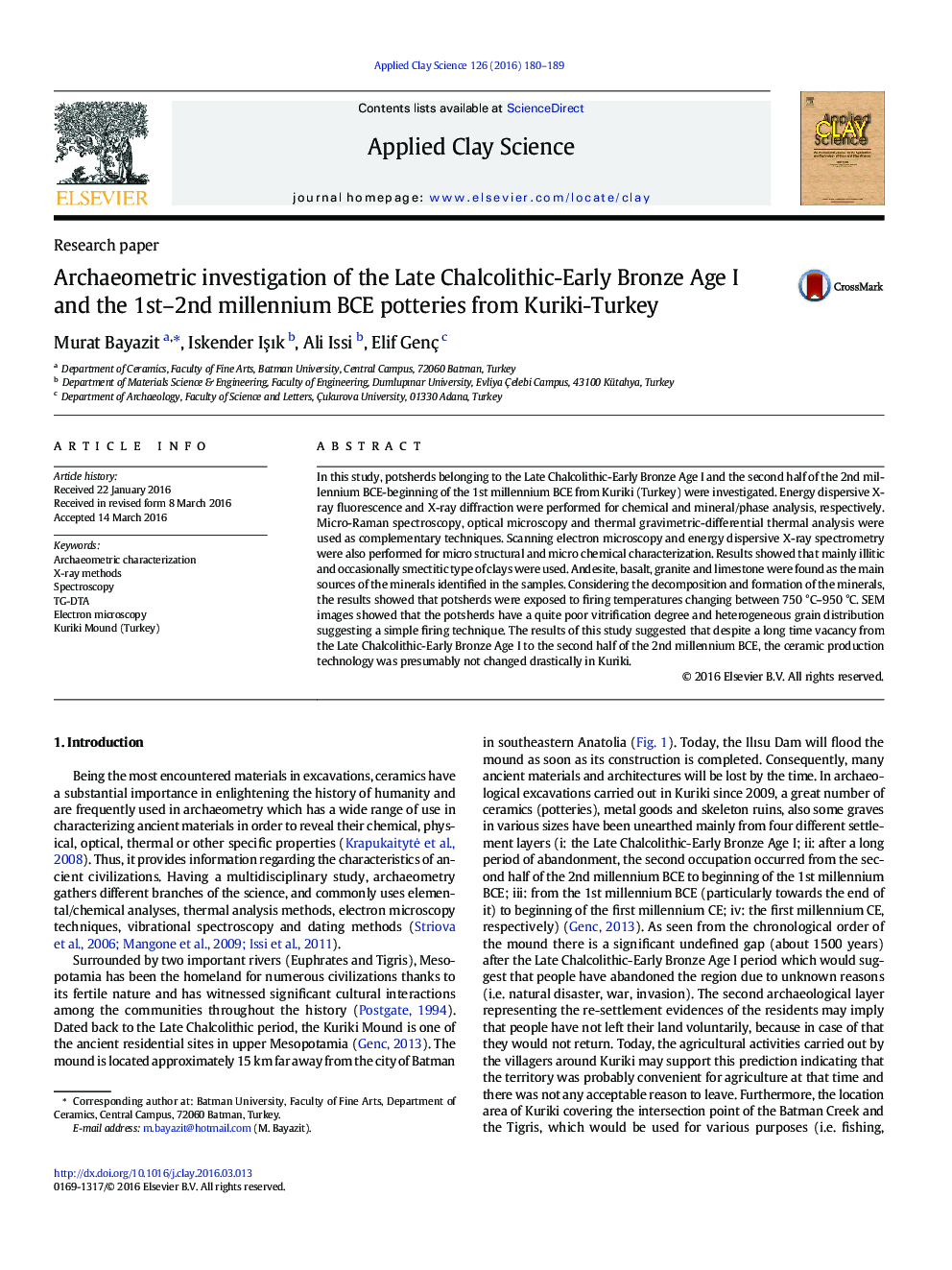| کد مقاله | کد نشریه | سال انتشار | مقاله انگلیسی | نسخه تمام متن |
|---|---|---|---|---|
| 1694057 | 1519059 | 2016 | 10 صفحه PDF | دانلود رایگان |

• Most of the samples have similar chemical composition.
• Mainly illitic and occasionally smectitic type of clays used.
• Potsherds exposed to firing temperatures changing between 750oC-950oC.
• Poor vitrification degree and heterogeneous grain distribution suggested a simple firing technique.
• Despite a long time vacancy ceramic production technology was presumably not changed drastically in Kuriki.
In this study, potsherds belonging to the Late Chalcolithic-Early Bronze Age I and the second half of the 2nd millennium BCE-beginning of the 1st millennium BCE from Kuriki (Turkey) were investigated. Energy dispersive X-ray fluorescence and X-ray diffraction were performed for chemical and mineral/phase analysis, respectively. Micro-Raman spectroscopy, optical microscopy and thermal gravimetric-differential thermal analysis were used as complementary techniques. Scanning electron microscopy and energy dispersive X-ray spectrometry were also performed for micro structural and micro chemical characterization. Results showed that mainly illitic and occasionally smectitic type of clays were used. Andesite, basalt, granite and limestone were found as the main sources of the minerals identified in the samples. Considering the decomposition and formation of the minerals, the results showed that potsherds were exposed to firing temperatures changing between 750 °C–950 °C. SEM images showed that the potsherds have a quite poor vitrification degree and heterogeneous grain distribution suggesting a simple firing technique. The results of this study suggested that despite a long time vacancy from the Late Chalcolithic-Early Bronze Age I to the second half of the 2nd millennium BCE, the ceramic production technology was presumably not changed drastically in Kuriki.
Journal: Applied Clay Science - Volume 126, June 2016, Pages 180–189